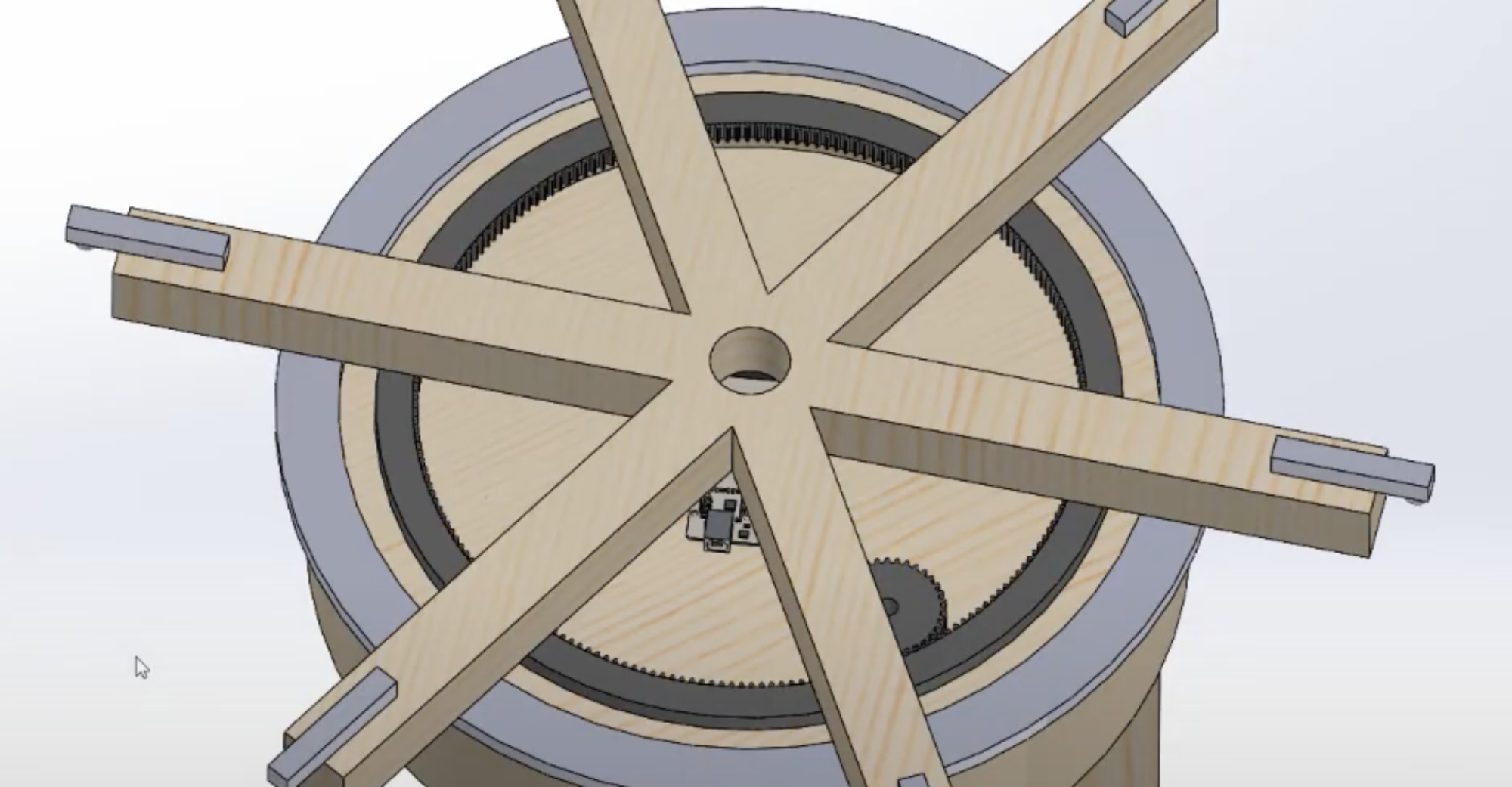THIS WEEK
This week, I completed the testing of the hardware components. Unfortunately, our previously single stepper motor did not seem to provide enough torque for our applications. I laser cut a new gear for use on the second backup stepper motor we had. Both motors together still did not provide enough torque. Going back to the drawing board, I calculated the torque ratings we needed and got the necessary components list we needed for a new stepper motor, the NEMA 34. We put that order in an are awaiting its arrival.
Next, Doreen and I implemented back and forth transmission between the two Arduinos and completed all of the code necessary for the item stand/rack to function. For example, upon the receipt of a check-in message, the Arduino Mega on the item stand will run a rack balance algorithm, determine the best location to place the item, rotate to the location, and poll on the weight sensor until it has detected a user placing their item, then sending back a success or fail message to the other Arduino.
Afterwards, we integrated the facial recognition code with our Arduino code by reading and writing to serial from the Python and Arduino code. Recently, we tried scanning our faces and it successfully sends check out/in instructions to an Arduino plugged in to the computer from the computer. The Arduino connected to the computer then transmits wirelessly to the Arduino on the item stand and the instruction is processed.
NEXT WEEK
Though I have done a lot of work this week, I am still slightly behind schedule. At this point in the schedule, I am supposed to be running end to end testing. This is because of some issues such as the motor still not being strong enough. Right now is a waiting game, for the new motor to come in and for facial recognition to be completely fleshed out. Next week, I plan to dedicate extra hours to wrap up the project, testing and installing the new (and much more powerful) motor, and helping on the web app side to make sure everything is integrated together well. I allocated slack time when I built the schedule so it is expected that the end of the semester might not fit the schedule completely.
